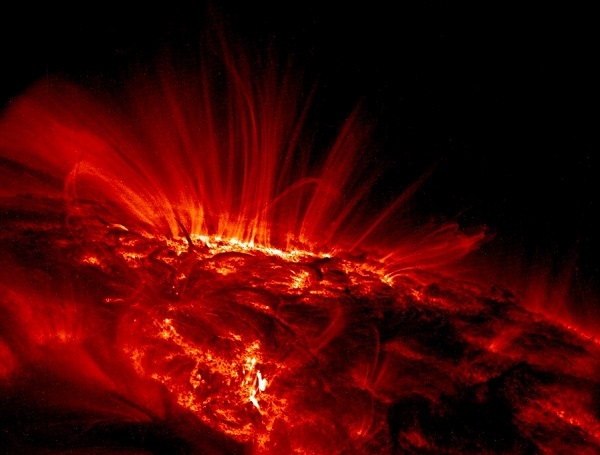Dónal Ring | Contributing Writer
Astrophysicists from Trinity College Dublin launched a new ambitious citizen science project yesterday that aims to improve our understanding of solar storms, sunspots, and their impact on the earth. Members of the public will form part of a large team collecting data on the phenomena.
Every so often, the sun throws out a huge solar storm in the direction of earth, which can lead to sudden and huge releases of energy in the atmosphere. These storms usually take a day or two to reach the planet, at which point they may enact spectacular displays of the Aurora Borealis, or Northern Lights. However, they can also be the cause of more serious issues, such as knocking out power grids, interrupting GPS and radio communication systems, and disrupting satellites.
Sunspots can be seen as dark spots where strong bundles of magnetic fields cross the surface of the sun from its interior, or vice versa. They appear dark as they are cooler than their surroundings, due to the shielding from strong magnetic fields against the sun’s boiling gas.
A team of TCD scientists in collaboration with Zooniverse have set up Sunspotter.org, a website drawing on the public in a bid to better understand the relationship between sunspots and solar storms.
Zooniverse has already been involved in some of the most successful and popular citizen science projects to date. The organisation stemmed from the original Galaxy Zoo project and currently hosts dozens of projects that encourage the public to be “citizen-scientists” and take part in real research. As of February 2014, the Zooniverse community consists of more than 1 million members.
Participants visiting Sunspotter.org will be asked to rank different images of sunspots in terms of their complexity, which is based on their size, shape, and combination of colour. This will help astrophysicists predict the ways in which Earth will be affected by future magnetic changes on the Sun.
Associate Professor of Astrophysics at Trinity, Peter Gallagher, explains why public engagement is necessary: “Even the most advanced computer software has not been able to accurately work out how explosive a particular sunspot is, which is why we need your help. But you’d be right to ask, why can’t scientists do the classifications themselves? The answer is that there is just far too much data!”
Dr Paul Higgins, Research Fellow at Trinity and lead scientist behind the project, added: “Sunspotter volunteers will be the ones to thank for putting in the hard work and improving our ability to classify sunspots and predict solar storms.”






